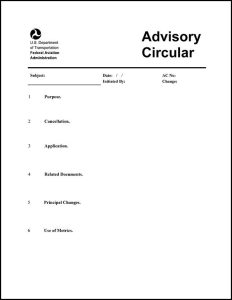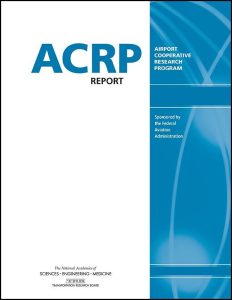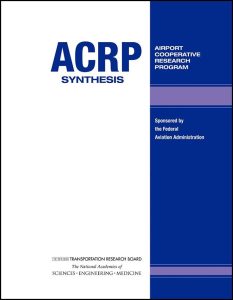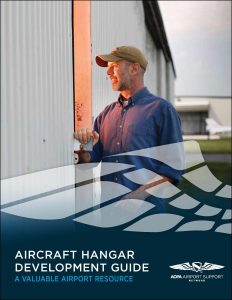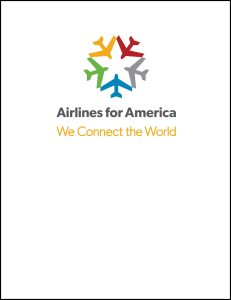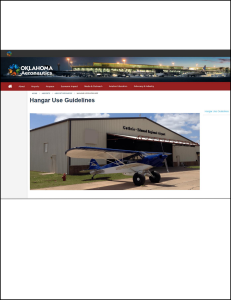To narrow the library of airside resources, use the filter boxes or airport map below or search box above.
Click an item below to expand.
Resources Matching Your Search
2021
This webpage contains four subparts that describe aviation security rules governing 1) the operation of airports regularly serving aircraft operations required to be under a security program under Part 1544 of this chapter, as described in this part; 2) the operation of airports regularly serving foreign air carrier operations required to be under a security program under Part 1546 of this chapter, as described in this part; 3) each airport operator that receives a security directive or information circular and each person who receives information from a security directive or information circular issued by the designated official for civil aviation security; and 4) each airport operator that does not have a security program under this part that serves an aircraft operator operating under a security program under Part 1544 of this chapter, or a foreign air carrier operating under a security program under Part 1546 of this chapter—both must comply with §1542.5.
2006
This advisory circular (AC) provides basic information pertaining to the FAA's recommendations on commercial minimum standards and related policies. Although minimum standards are optional, the FAA highly recommends their use and implementation as a means to minimize the potential for violations of federal obligations at federally obligated airports.
2020
This advisory circular (AC) provides guidance on certain land uses that have the potential to attract hazardous wildlife on or near public-use airports. It also discusses airport development projects (including airport construction, expansion, and renovation) affecting aircraft movement near hazardous wildlife attractants. Appendix 1 provides definitions of terms used in this AC.
2016
The purpose of ACRP Legal Research Digest 28: Operational and Legal Issues with Fuel Farms is to provide a practical guide to help airport sponsors and legal professionals (1) understand the basic legal and operational issues presented by on-airport fuel distribution systems and (2) evaluate an appropriate ownership and management model to address those legal and operational issues.
2011
ACRP Report 47 discusses the key issues associated with developing and leasing available airport land and summarizes best practices from the perspective of the airport sponsor. The report presents a diverse set of case studies that show the approaches that airports have taken to develop and lease property for aeronautical uses (e.g., aircraft maintenance facilities, fixed-base operator facilities, hangars, training centers, and cargo facilities) and non-aeronautical uses (e.g., light industrial and commercial facilities).
2015
ACRP Synthesis 61 reviews current practices in developing and preserving public-use seaplane bases throughout the United States. The report reviews and presents information on the planning process, design considerations, permits, regulatory requirements, and facility and service needs of seaplane bases.
2015
ACRP Synthesis 63 explores airport fueling system operations at all sizes of airports. The report describes fueling standards and regulations as well as common operations and components, and it serves as a reference for a number of fueling processes and procedures. On-airport fueling systems and components are the main focus of the report.
2006
This guide is designed to help airports develop a project management strategy to successfully plan, design, and complete a new hangar development project. This resource will cover project scoping, financial justification, preliminary design and budgeting, funding, approvals, construction, and moving in. It will also help anticipate the challenges that can affect a hangar project.
2013
This publication also provides airport owners and operators with information and guidelines for a standardized T-hangar bid package. This includes financial information to assist with the various stages of T-hangar development. This document also provides generic standard specifications and minimum requirements for T-hangar construction that can be tailored to account for differences in local conditions, laws, or regulations, and unique requirements of an airport, based on its operations and conditions.
2018
These are guidelines for airport authorities, aircraft operators, and ground handling agents to help develop rules or regulations for driving on the ramp or apron. The airport authority should take the lead in developing the program that deals with driving on the ramp/apron to ensure consistency. The aircraft operators or ground handling vendors will train employees on the specific equipment and operating around aircraft. The document is offered for free through the A4A website and emailed for download after a no-cost purchase process.
2015
This advisory circular (AC) provides guidance for the preparation of master plans for airports that range in size and function, from small general aviation to large commercial service facilities. The intent of this AC is to foster a flexible approach to master planning that directs attention and resources to critical issues. The scope of each master plan must be tailored to the individual airport under evaluation.
2017
This website provides hanger use guidelines and frequently asked questions and answers on FAA policy on the use of hangars at obligated airports.
2019
ACRP Report 16, second edition, is designed to help airport practitioners, owners, operators, managers, and policymakers of small airports, who may have varying degrees of experience and backgrounds, to fulfill their responsibilities in such areas as financial management, oversight of contracts and leases, safety and security, noise impacts, community relations, compliance with federal and state obligations, facility maintenance, and capital improvements. The first edition has been edited and reformatted for currency, relevance, and usability and updated with additional information and new subject areas (e.g., unmanned aircraft systems, geographic information systems, digital notices to airmen, social media, and federal and state obligations). Also, hyperlinks to many of the documents and resources mentioned in this report, such as ACRP publications, industry sources, and sample checklists, have been collected into ACRP WebResource 6: Resources for Managing Small Airports.
2016
ACRP Synthesis 74 documents practices in safely accommodating mixed-use aeronautical activity at airports. Mixed-use aeronautical activity refers to the different categories of aircraft a public-use airport is intended to accommodate in compliance with FAA sponsor assurances. These categories include gliders, helicopters, ultralight vehicles, balloons, airships, blimps, skydiving, aerial applications for agriculture and firefighting, banner towing, aerobatic practice, and similar flight operations.
2009
ACRP Synthesis 15 explores information on the requirements and training required to obtain driving privileges on airport airfields and the differences and similarities among the various airports throughout the country. The report also examines information on the types of training programs available to airport employees based on where the employees were authorized to drive.
2021
This resource provides an example of a permit application for assigned-space aircraft tiedown parking.
2021
This resource provides information and guidance for contractual agreements on tiedown parking between airports and users.
2021
This resource provides information and guidance for contractual agreements on tiedown parking between airports and users.
2011
ACRP Legal Research Digest 11: Survey of Minimum Standards: Commercial Aeronautical Activities at Airports explores source material for adopting and enforcing minimum standards that airport owners and operators commonly impose on businesses that perform commercial aeronautical activities that occur at airports. Examples of aeronautical activities include aircraft fueling, line (ground handling) services, maintenance and repair, storage, rental and flight training/instruction, sales, and charter and management. The report also explores current practices in the area of minimum standards and includes a compendium of comparative minimum standards.
2015
TRB conducted a webinar that featured research conducted by ACRP Legal Research Digest 23: A Guide for Compliance with Grant Agreement Obligations to Provide Reasonable Access to an AIP-Funded Public Use General Aviation Airport and ACRP Legal Research Digest 11: Survey of Minimum Standards: Commercial Aeronautical Activities at Airports. This webinar was geared toward regulatory officials, policy makers, and attorneys in the field who would like information about grant compliance and standards for commercial aeronautical activities.

